Introduction
Looking for durable, rust-resistant aviary netting to protect birds, small animals, or delicate plants? Our stainless steel 304 netting for aviary structures offers unmatched strength and longevity, designed for enclosures, farming, and zoo habitats. Available in natural stainless steel and sleek black oxide finishes, our netting blends functionality with aesthetics. Choose standard 25′ x 60′ rolls or request customized sizes to reduce waste and cost.
Recommended Aviary Netting Mesh Specifications
Product Name: Aviary Netting
Material: Stainless Steel Wire Rope 304/316
Roll Size: Max 25′ x 60′
Customized: Available with same cost.
| Item ID | Mesh Details | Material |
|---|---|---|
| HM1220 | 3/4″ x 3/4″ x 3/64″ | SS304/316 |
| HM1225 | 1″ x 1″ x 3/64″ | SS304/316 |
| HM1238 | 1.5″ x 1.5″ x 3/64″ | SS304/316 |
| HM1250 | 2″ x 2″ x 3/64″ | SS304/316 |
| HM1625 | 1″ x 1″ x 1/16″ | SS304/316 |
| HM1638 | 1.5″ x 1.5″ x 1/16″ | SS304/316 |
| HM1650 | 2″ x 2″ x 1/16″ | SS304/316 |
| HM2038 | 1.5″ x 1.5″ x 5/64″ | SS304/316 |
| HM2050 | 2″ x 2″ x 5/64″ | SS304/316 |
| HM2438 | 1.5″ x 1.5″ x 3/32″ | SS304/316 |
| HM2450 | 2″ x 2″ x 3/32″ | SS304/316 |
| HM3250 | 2″ x 2″ x 1/8″ | SS304/316 |
| HM3276 | 3″ x 3″ x 1/8″ | SS304/316 |
Why Choose Our Aviary Netting?
✅ Material: Stainless Steel 304 (rustproof, weather-resistant, non-toxic).
✅ Colors: Natural (silver) or Black Oxide (discreet, low-glare).
✅ Sizes: Standard 25’ x 60’ rolls + custom dimensions to fit your project.
✅ Applications: Bird enclosures, zoo exhibits, farm fencing, garden protection.

Key Benefits of Stainless Steel 304 Netting
- Durability: Withstands harsh weather, UV rays, and corrosion.
- Safety: Smooth edges and flexible design prevent injury to animals.
- Cost-Effective: Custom cuts minimize material waste.
- Low Maintenance: Easy to clean and retains shape over time.
Who Uses Our Aviary Netting?
- Zookeepers: Secure large exhibits for birds and small wildlife.
- Farmers: Protect poultry or crops from predators.
- DIY Enthusiasts: Build backyard aviaries or greenhouse shields.
- Commercial Facilities: Durable netting for long-term installations.
Why Partner With Us?
- Fast Shipping: Ready-to-ship standard sizes or quick-turn custom orders.
- Expert Support: Get sizing advice or installation tips from our team.
- Satisfaction Guarantee: 100% quality-checked netting backed by a 1-year warranty.
Ready to Order or Need a Quote?
📧 Email: info@hebmetalmesh.com
🌐 Online shop: 6′ x 60′, 10′ x 60′, 30′ x 60′ rolls handwoven stainless steel mesh with series specifications
Final Thought
Whether you’re safeguarding exotic birds in a zoo, chickens on a farm, or creating a serene garden aviary, our stainless steel 304 netting for aviary projects delivers reliability and value. With flexible sizes and two timeless finishes, it’s the smart choice for pros and hobbyists alike.
Act Now: Click above info to request a personalized quote or chat live with our netting specialists!
Aviary mesh & netting for birds
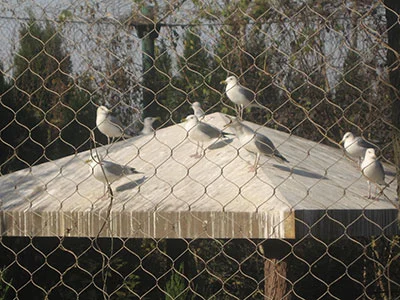
Recommended specifications :
Handwoven stainless steel netting HM1225;
Details:
Stainless steel wire rope: 3/64″ (1.2 mm);
Mesh opening size: 1″ x 1″ (25.4 mm x 25.4 mm);
Wire mesh for toucan exhibit
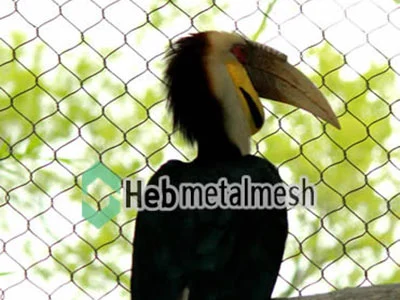
Recommended specifications :
Handwoven stainless steel netting HM1638;
Details:
Stainless steel wire rope: 1/16″
Mesh opening size: 1.5″ x 1.5″
Aviary mesh for white peafowl exhibit enclosure

Recommended specifications :
Handwoven stainless steel netting HM1638;
Details:
Stainless steel wire rope: 1/16″ (1.6 mm);
Mesh opening size: 1.5″ x 1.5″ (38 mm x 38 mm);
Aviary netting for Red-crowned crane enclosures
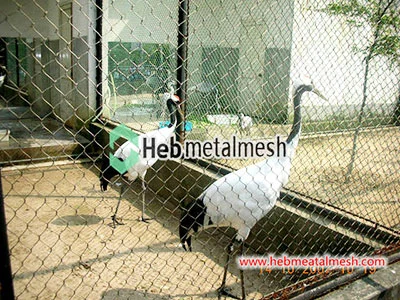
Recommended specifications :
Handwoven stainless steel netting HM1650;
Details:
Stainless steel wire rope: 1/16″ (1.6 mm);
Mesh opening size: 2″ x 2″ (51 mm x 51 mm);
Aviary Mesh & Netting for Ostrich Exhibit Mesh
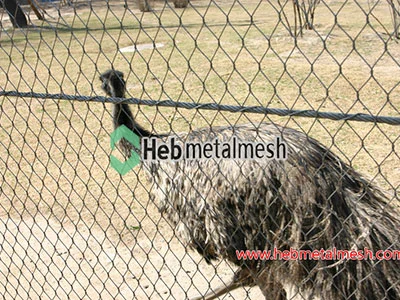
Recommended specifications :
Handwoven stainless steel netting HM2050;
Details:
Stainless steel wire rope: 5/64″ (2.0 mm);
Mesh opening size: 2″ x 2″ (51 mm x 51 mm);
Wire mesh for Pheasant exhibit, pheasant enclosure mesh
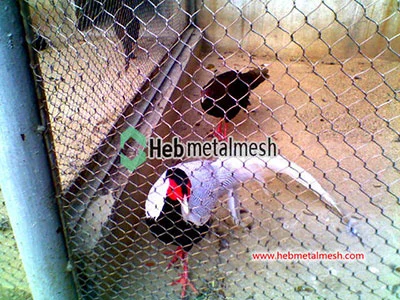
Recommended specifications :
Handwoven stainless steel netting HM1638;
Details:
Stainless steel wire rope: 1/16″ (1.6 mm);
Mesh opening size: 1.5″ x 1.5″ (38 mm x 38 mm);
aviary mesh & netting for flamingo, flamingo enclosure mesh

Recommended specifications :
Handwoven stainless steel netting HM1650;
Details:
Stainless steel wire rope: 1/16″ (1.6 mm);
Mesh opening size: 2″ x 2″ (51 mm x 51 mm);
Aviary mesh & netting for Macaw, macaw enclosure mesh

Recommended specifications :
Handwoven stainless steel netting HM2450;
Details:
Stainless steel wire rope: 3/32″ (2.4 mm);
Mesh opening size: 2″ x 2″ (51 mm x 51 mm);
In general, the size of the bird determines the mesh. The strength of the bird determines the diameter of the wire rope. Specific specifications need to be selected according to the actual birds. Choosing the right product specifications can effectively reduce project costs.
FAQs: What Buyers Want to Know About Aviary Netting
Absolutely! It’s non-toxic, rust-free, and won’t leach harmful chemicals, making it ideal for sensitive habitats.
Stainless steel 304 resists corrosion, ensuring 10+ years of service even in coastal or rainy climates.
Yes! We tailor netting dimensions to your needs, reducing installation hassle and material costs.
Yes—the black oxide coating adds an extra layer of protection against scratches and blends into natural settings.
Use zip ties, clamps, or wire to secure it to frames. We recommend 1-2” spacing for small birds and tighter gaps for bats or insects.
Contact us for volume discounts! The more you order, the more you save.
Handwoven stainless steel netting is safe for birds as it is durable, rust-resistant, and does not contain any harmful chemicals. It is also strong enough to prevent birds from escaping or predators from entering, while still allowing sunlight and fresh air to pass through. Additionally, the openings in the netting are small enough to prevent birds from becoming entangled.
Zoo mesh with a gauge of 3/64″ or 1/16″ and a size of 3/4 inch or 1 inch is commonly used for outdoor aviaries. This provides good ventilation and protection from predators while still allowing birds to move around freely. It’s also important to ensure that the mesh is rust-resistant and coated with a non-toxic material to avoid harming the birds.
